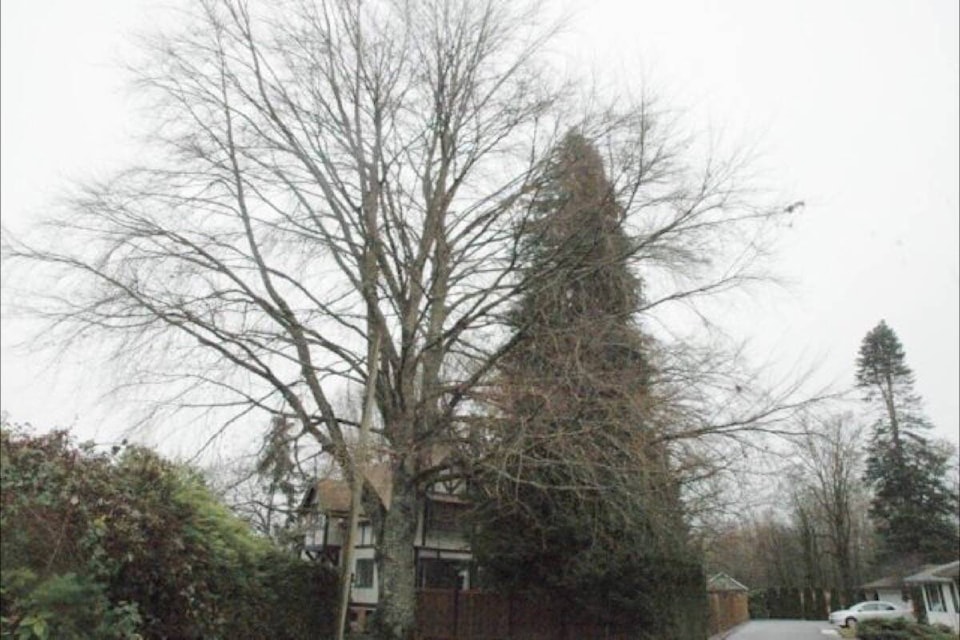The City of Duncan is looking to tighten up its tree-protection bylaw.
At a recent council meeting, council directed staff to amend the bylaw to add more restrictions to the city’s process for the removal of protected trees, which are considered to be any tree that has a diameter of more than 30 centimetres, from private lands in Duncan.
Brian Murphy, the city’s director of public works and engineering, said that while property owners must currently acquire a permit to remove protected trees from their properties, there is effectively no grounds in place for the city not to grant the permit.
RELATED STORY: CITY OF DUNCAN REMOVES THREE LARGE MAPLE TREES IN MCADAM PARK
“Protected trees can be removed from private property for any reason, so the proposal [for bylaw amendments] is to limit the reasons as to why they are removed,” he said.
Murphy said the proposed acceptable reasons for the removal of protected trees includes when they are considered a hazard, or where the permit applicant has otherwise demonstrated to the satisfaction of the city that the tree is dead, damaged, diseased, or in decline beyond expectation of recovery.
Another reason would be if the tree is causing damage to existing infrastructure on the property, and the risk can’t be reduced or dealt with through any other reasonable solution other than the removal of the tree, as determined by the city or a qualified professional engineer.
RELATED STORY: NORTH COWICHAN HOMEOWNER UPSET WITH LOSS OF TREES
Other acceptable reasons for the removal of protected trees is to make way for construction projects where no other suitable locations are available for the project.
Murphy recommended that the updated tree protection bylaw also create a tree-density target that supports the Urban Forest Strategy target of 40 per cent canopy cover by 2050.
That would see the density target for Duncan at 50 protected trees per hectare.
“The density target would only be applied when a property owner applies for the removal of protected trees,” Murphy said.
“Replacement trees [which would also have to be at least 30 centimetres in diameter when mature] would be required at a ratio of two-to-one for protected tree removals. If the property can’t accommodate the required replacement tree(s), there is still the option for the homeowner to plant a replacement tree on city property in consultation with the city. The homeowner may also pay the cash-in-lieu fee for a replacement tree [which is currently set at $500].”
Murphy said other, smaller replacement tree species being replanted will be accepted as substitute trees, but at a ratio of three-to-one instead of two-to-one.
RELATED STORY: RESIDENTS TO PRESENT PETITION FOR TREE-PROTECTION BYLAW IN NORTH COWICHAN
He recommended that the updated bylaw also implement a new requirement for a security of $500 for each replacement tree required by each permit.
He said the security would be refunded with proof that the required number of replacement tree plantings has been completed.
Staff also propose that the permit fee, which is currently $50, be required for all tree-removal permits, except for hazard trees, as additional staff time will be required to review tree removal permit applications under the proposed changes.
“Staff believe that the proposed list of acceptable reasons for removing a protected tree will cover most reasonable circumstances for tree removal, while still offering protection to existing protected trees against more arbitrary removals,” Murphy said.
“The proposed tree-density target and replacement-tree ratio will help grow the city’s tree canopy over time, while presenting achievable targets for each residential property.”
robert.barron@cowichanvalleycitizen.com
Like us on Facebook and follow us on Twitter
